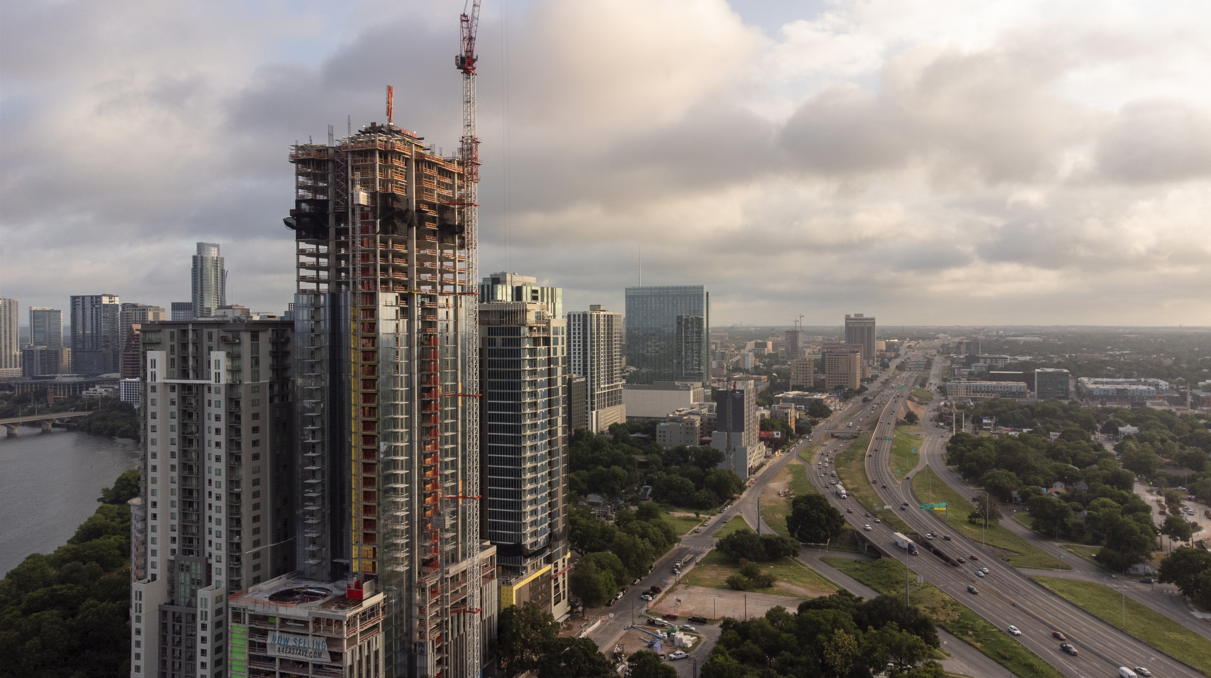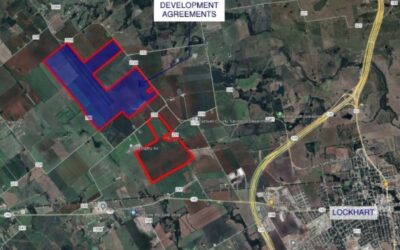‘It would take something really strange to make Austin stumble,’ one expert says
It’s probably a mistake to bet against robust growth for the local economy in 2024, even if it clearly slowed in 2023 from its post-pandemic boom.
That’s according to a number of economists who expect business activity in the Austin metro to be relatively strong in the new year. The jobs, and the people, will keep flocking here throughout 2024, they said.
“As long as there is not a major economic disruption (nationwide), Austin is going to be at the head of the pack,” in terms of U.S. economic growth, said Peter Rodriguez, dean of Rice University’s Jones Graduate School of Business. “It would take something really strange to make Austin stumble.”
Growth in the Austin area roared ahead after the 2020 slump at the height of the Covid-19 pandemic, when business activity locally and across the country essentially hit a standstill. Since that crisis, real gross domestic product in the Austin metro area — meaning the value of all goods and services produced, adjusted for inflation — climbed by a whopping 10.5% in 2021 and a still-huge 7.4% in 2022, according to federal statistics.
For comparison, U.S. real GDP growth came in at 5.8% in 2021 and 1.9% in 2022. In Texas, it came in at 5.7% and 2.7%, respectively, in those years.
Metro-level GDP data is not yet available for 2023. But expectations are that the Austin area will likely once again log a solid gain — albeit just not at the nosebleed levels of the previous two years, which economists say were turbocharged by extremely low interest rates and the federal government’s massive stimulus spending designed to speed a pandemic recovery.
“Those (GDP growth) rates, 8% or 10%, are unsustainable,” said Luis Torres, senior business economist at the Federal Reserve Bank of Dallas. “You can’t achieve those levels forever.”
But Torres said the Austin-area economy still has plenty going for it as the new year gets underway, even as he declined to make specific GDP forecasts for 2023 or 2024.
“Right now, I can’t see any redlines or red flags” that might prevent the Austin area from continuing to grow at a solid clip, he said. “People still want to move to Austin and people still want to live in Austin.”
Other economists contacted by the Austin Business Journal were less reticent in making predictions, with their forecasts for the region’s likely 2023 growth rate ranging from 2% to 5% and for a 2024 growth rate potentially near 5%.
“Anything at 3% or higher is very good” for a typical U.S. metro, said Rice’s Rodriguez, who estimated that Austin-area GDP growth probably came in at a high-4% pace in 2023 and is likely to duplicate that performance this year.
To be sure, higher interest rates enacted in 2023 have cooled the once-sizzling local housing market, while layoffs in the technology sector last year — a byproduct in some cases of post-pandemic hiring sprees — hit the Austin area particularly hard because of its status as a tech hub. The woes have trickled into other sectors, such as the office space market.
According to an analysis last month by the Dallas Fed, the Austin area had an “unusually high” level of layoffs through the first 10 months of 2023 that were large enough to require reporting to state officials under the federal Worker Adjustment and Retraining Notification Act, known as the WARN act. The Austin area accounted for about 20% of statewide WARN layoffs during that period — equating to about 3,500 jobs — which came in well above the region’s average of about 6% of the statewide total from 2012 to 2019.
WARN notices don’t encapsulate all layoffs in a region because many don’t meet the reporting requirements, meaning job cuts in Austin and elsewhere last year were higher than the WARN numbers reflect.
Still, the layoffs have come within the context of what has been a torrid pace of local hiring in recent years, culminating in about 1.34 million people working in the Austin metro in November — the most ever — according to figures from the Dallas Fed.
The region added more than 245,000 jobs, or a 22% gain, from November 2018 to November 2023, a recent review of federal data by real estate data analytics firm RealPage showed. It was the biggest percentage increase among the major U.S. markets tracked. The Dallas metro topped the ranking, in terms of total number of jobs added over that period, with a gain of more than 456,000, or 17%.
“I don’t want to discount the individual pain of layoffs, but on net we are still adding jobs,” said Jason Schenker, president of Austin-based Prestige Economics. “That means for everyone who gets laid off, there is more than one person getting a job.”
The local unemployment rate also remains low relative to many other regions, even though it ticked up in 2023. Adjusted for seasonal factors, it came in at 3.4% in November, the most recent figure available, higher than its rate of 2.8% in November 2022 but below both the comparable U.S. jobless rate of 3.6% and the statewide rate of 4.1%.
Meanwhile, plenty of magnets remain in the Austin area to attract new residents and workers. They include the $17 billion semiconductor plant being built in Taylor northeast of Austin by electronics giant Samsung, the growing regional footprint of electric vehicle maker Tesla Inc. and the myriad other companies that have expanded or relocated to the area in recent years. And, as always, the city’s status as the seat of state government and home to the University of Texas keep them coming.
With the U.S. Federal Reserve widely anticipated to cut interest rates in 2024 as inflation comes into check, economists expect the local real estate market to rekindle.
“It should be a good year,” Schenker said for Austin. “I think there are a lot of reasons to be optimistic about both the Austin economy and the Texas economy.”
He said local GDP probably grew 2% to 5% last year and appears well positioned to hit the top end of that range in 2024.
Dirk Mateer, an economist and University of Texas professor, forecast growth for the Austin-area economy at a solid 5% in 2023 and said it should hit that mark again this year, barring an unforeseen shock to the national economy that reverberates across the country.
“I don’t think it can touch the 7.4% (of 2022), but if it were 5%, that would be fantastic” for a major U.S. metro, Mateer said. “There are so many new people in the area that it just naturally increases the GDP, (so) 4 to 5% is an easy call. All these major companies are here and all these related businesses are here and there is still a lot of migration into Texas — it’s a perfect confluence.”









